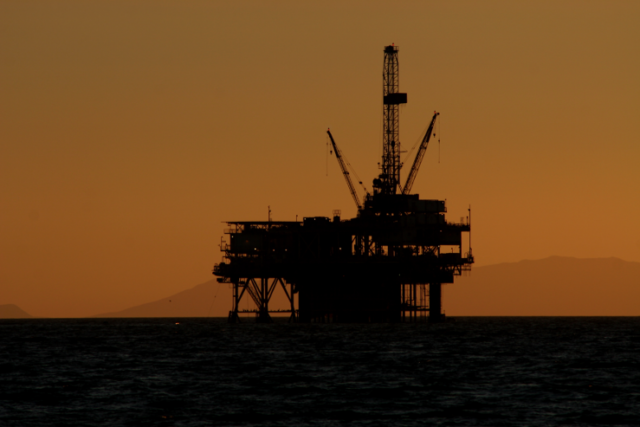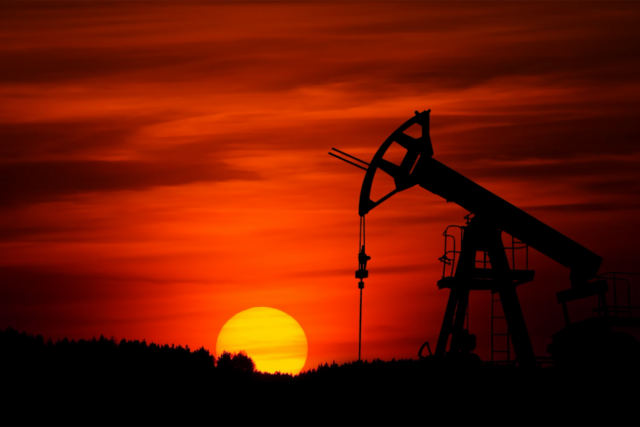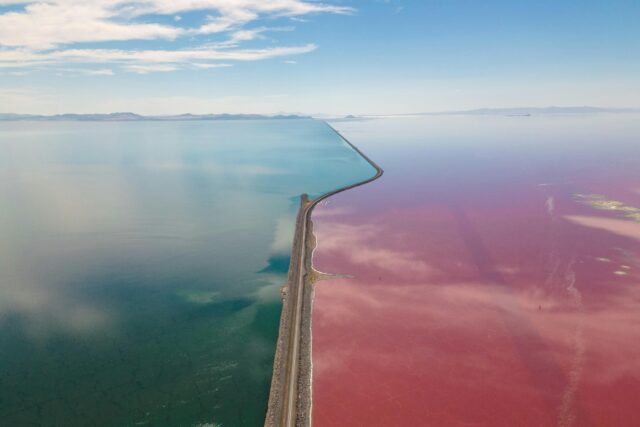Prisons as Sacrifice Zones
Tracing the Corporate Profiteers Behind Environmental and Climate Injustices in Carceral Facilities
Jessenia Class
May 10, 2024
Last year, Hurricane Ian made landfall in Florida. Torrential rain flooded the streets; trees snapped in half; the power went out. At least 149 people died. It was the deadliest storm in Florida in generations. Many more suffered — particularly the elderly, those with pre-existing medical conditions, and those living in precarious conditions or lacking the capital that would enable them to evacuate in time.
Many were connected to support. Nonprofits and federal agencies sent resources to the people impacted in the region. The government of Florida committed $1 billion to local communities. Slowly, but surely, people impacted by the natural disaster were being connected to support systems to facilitate recovery efforts.
But this support wasn’t extended to everyone.
People incarcerated in Florida’s jails, prisons, and detention centers received very little attention from national media outlets, local or federal government, or NGOs when Hurricane Ian made landfall. They, too, suffered from the intense weather. They, too, had to overcome storm surges and lack of power, food, or potable water. Yet few rallied for incarcerated people’s support in the same way.
This story isn’t new. In fact, it’s happened before: four years prior, Hurricane Michael had devastated a Florida jail that failed to evacuate before a record-setting storm. The same plights existed, and the same failure of the system followed. “Mom, it’s really bad here,” Melinda Aronson recalls hearing from her incarcerated son, as reported by Buzzfeed News. “The roof of my dorm just fell out.”
Environmentalists and opponents of the prison industrial complex have sounded the alarm on climate change and environmental injustices in incarceration since the early 1990s. Yet little attention has been given to these grievances.
Incarcerated people have been fighting ecological injustices across the country for decades. For example, Bryant Arroyo, an incarcerated person in Pennsylvania, organized hundreds of other incarcerated people to write letters to the nearby town supervisors and worked with outside environmental organizations to protest the planned construction of an $800 million coal gasification plant right next to the prison. Jonathan Jones-Thomas helped expose immense sewage spills while incarcerated in Washington State’s Skykomish River by the Monroe Correctional Complex. And Robert Gamez spoke out against military Superfund sites and proposed toxic copper mine waste injections, which surrounded the Arizona facility where he was detained and forced into solitary confinement.
On the surface, the plight of incarcerated people may seem indistinguishable from that of others when it comes to environmental injustice. People both inside and outside of the prison system suffer from increasingly erratic climate disasters and toxic conditions, both perpetuated by corporate actors profiting from this system.
But the story of incarceration and environmental injustice captures a uniquely insidious intersection of corporate incentives. Developers are incentivized to build prisons cheaply, which often means that these facilities are on or near toxic land. Poorly constructed facilities in isolated areas are thus less resilient to increasingly erratic weather conditions caused by climate change.
The story of incarceration and environmental injustice captures a uniquely insidious intersection of corporate incentives.
Together, these corporate actors create the conditions for a group of incredibly marginalized incarcerated people — often disproportionately Black, Brown, and low-income — to suffer the brunt of environmental injustice. Instead of attending to environmental and climate concerns, those in charge of carceral facilities instead “opt[] to save money,” Khaȧliq Shakur, a writer incarcerated in Texas, says in an opinion article featured in The Guardian. “That’s because what is happening to us isn’t considered inhumane. In red-hot Texas, it’s considered justice if convicted prisoners roast like chickens.”
Prisons, thus, are treated as sacrifice zones — communities in proximity to pollutants, facing the brunt of climate-induced conditions, left by the wayside in the name of “cost-cutting.”
Environmental Injustice in Prisons
The United States has the largest prison system on the planet, housing roughly 25 percent of the world’s incarcerated population. According to Prison Policy Initiative, almost 2 million people are incarcerated in “1,566 state prisons, 98 federal prisons, 3,116 local jails, 1,323 juvenile correctional facilities, 181 immigration detention facilities, and 80 Indian country jails, as well as in military prisons … and prisons in the U.S. territories.”
Within this massive carceral system lies a history of socioeconomic disparities, environmental racism, and ecological injustice promulgated by corporate desires.
This starts with the siting of prisons. “This is when the seduction dance begins on the part of these giant corporations and the [Federal Bureau of Prisons],” Arroyo writes. “[T]oo often . . . the people in [prison towns] are unaware that [prison] companies have a specific set of criteria for targeting their next victim community, that is, communities with high unemployment rates where people are in financial trouble.”
These are often Southern rural towns with larger shares of Black people, Latinx people, and people living in poverty. These towns often compete for a prison in their city under the illusion it would bring jobs and help their economies through jobs and corporate taxes.
While prison towns can benefit from collecting hefty property taxes, sales tax from prison commissaries, and taxes off of prison telecommunications companies, most prison jobs will go to people from outside of town. Indeed, a 2010 study demonstrated that towns with prisons, as compared to those without, experienced significantly lower increases in employment, retail sales, household wages, housing units, and home values.
Once prisons are sited within economically depressed communities, it is difficult for a town to attract other industries and further economic development in the area. Prisons are typically considered Locally Unwanted Land Uses (LULUs) — structures associated with negative outcomes. As founder and director of Prison Public Memory Project Tracy Huling writes, “[t]he lack of amenities in a town, coupled with the dominance of a prison on its social and economic horizon, may discourage other industries from locating in the town which might, for all other purposes, be perfectly suitable.”
Corporate flight then traps communities around prison towns and incarcerated people in prisons, dooming them to more toxic industries moving into their backyards and wreaking more environmental havoc.
In conversation with Huling, executive director Ann Ruzow Holland of Friends of the North Country, a community development group that opposed prison building, agreed with this assessment: “Once you have the reputation of a prison town, you won’t become a Fortune 500 company town, or an Internet or software company town, or even a diverse tourism and company town.”
This form of corporate flight then traps communities around prison towns and incarcerated people in prisons, dooming them to more toxic industries moving into their backyards and wreaking more environmental havoc.
This has been particularly true for California prison towns; after the state saw a boom in prison developments in the 1980s and 1990s, its prison towns faced difficulty branching out into other industries. “Explanations for this difficulty,” Huling posits, “range from the ‘specter’ of prison as an undesirable neighbor, to the fact that prisons are not necessarily required to conform to all environmental and other controls. Thus, in California prison towns like Tehachapi and Avenal, water quantity and quality have become major issues.”








